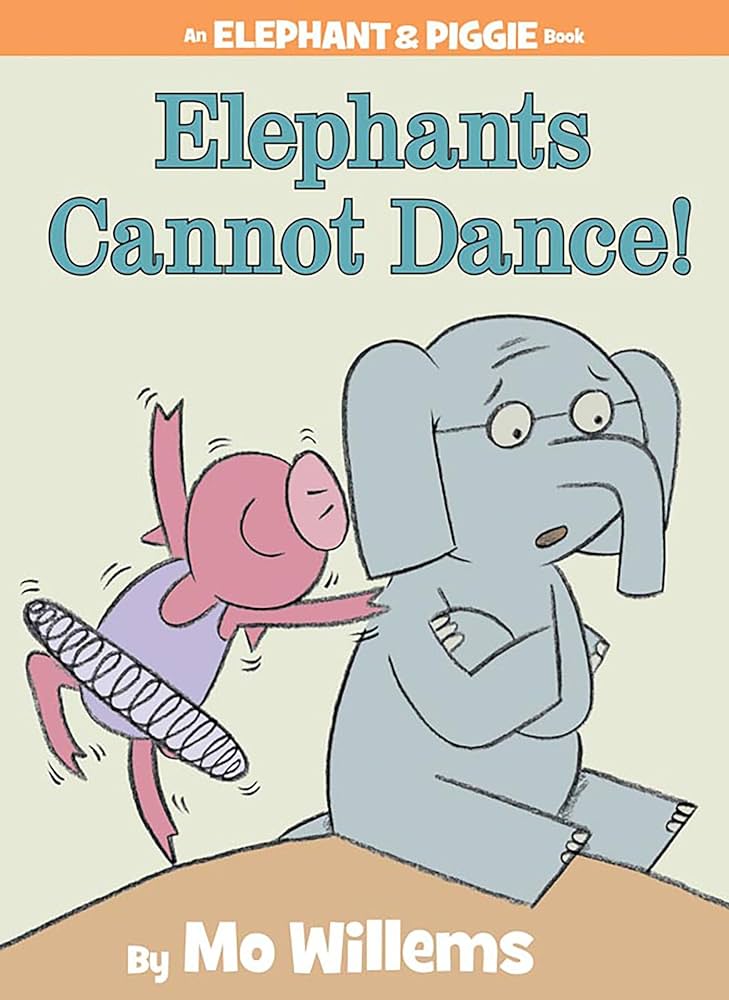SEL Read Aloud: Elephants Cannot Dance! by Mo Willems

Summary
“Elephants Cannot Dance!” by Mo Willems is a heartwarming and humorous story about Gerald the elephant, who initially believes that elephants cannot dance. The story unfolds as Gerald’s friends encourage him to give dancing a try despite his doubts. The friends embark on a dance journey together, attempting various moves and having fun along the way. Despite Gerald’s initial struggles, the story takes an uplifting turn as his friends express a desire to learn the elephant dance, emphasizing the importance of encouragement, perseverance, and embracing one’s unique qualities. Through Gerald’s experience, the book imparts valuable lessons about resilience, trying new things, and the joy of self-expression.
Comprehension Questions
Six questions aligned to Bloom’s taxonomy for teacher’s to evaluate students’ comprehension
- Remembering: Can you recall the different dance moves Gerald tries?
- Understanding: Why does Gerald initially believe that elephants cannot dance?
- Applying: How would you describe Gerald’s feelings throughout the story?
- Analyzing: Analyze the role of Piggie and the squirrels in encouraging him to dance.
- Evaluating: Assess whether Gerald’s perception of himself changes by the end of the story.
- Creating: Design a new character who Piggie might try to teach to dance. What characteristics would this character have?
CASEL Discussion Questions
Five questions aligned to the CASEL competencies for teachers to foster an engaging discussion and foster social-emotional learning
- Self-Awareness: How did Gerald feel about his ability to dance in the beginning?
- Self-Management: What strategies did Gerald try to use to dance? How did he manage his feelings when he couldn’t dance initially?
- Social Awareness: How did Gerald’s friends react when they saw him trying to dance?
- Relationship Skills: What qualities do you think make Gerald a good friend?
- Responsible Decision Making: What decision did Gerald make when he realized he couldn’t teach his friends to dance?
Design Thinking Challenge
Take students’ learning even further by incorporating the Imagineerz design thinking framework
Create a Dance Routine Just for Gerald
Understand
- Begin by reading “Elephants Cannot Dance” by Mo Willems.
- Engage in a class discussion about Gerald’s journey in the book. How did he feel about dancing, and how did he overcome challenges? What kind of dance do you think would suit Gerald’s personality?
Ideate
- Encourage students to brainstorm different dance moves that could express Gerald’s uniqueness. They might consider the music that would go well with Gerald’s dance. What kind of rhythm or beat would match his character?
Prototype
- In small groups, students will choose a few dance moves from your brainstorming session and put them together to form a short routine. They might experiment with the sequence and timing of the dance moves.
Test
- Students will perform their dance routines and observe how well they represent Gerald’s character. They might gather feedback from classmates. What did they like about the dance? Is there anything that could be improved?
Read Aloud
If you appreciated getting to read this book with your class, you might also want to share this book with them!
Additional Resources
Copyright Notice
The image on this page comes from the book Elephants Cannot Dance by Mo Willems. Copyright © 2009 by Mo Willems.


